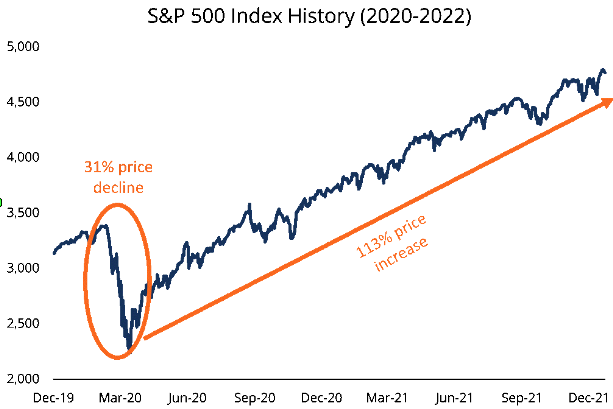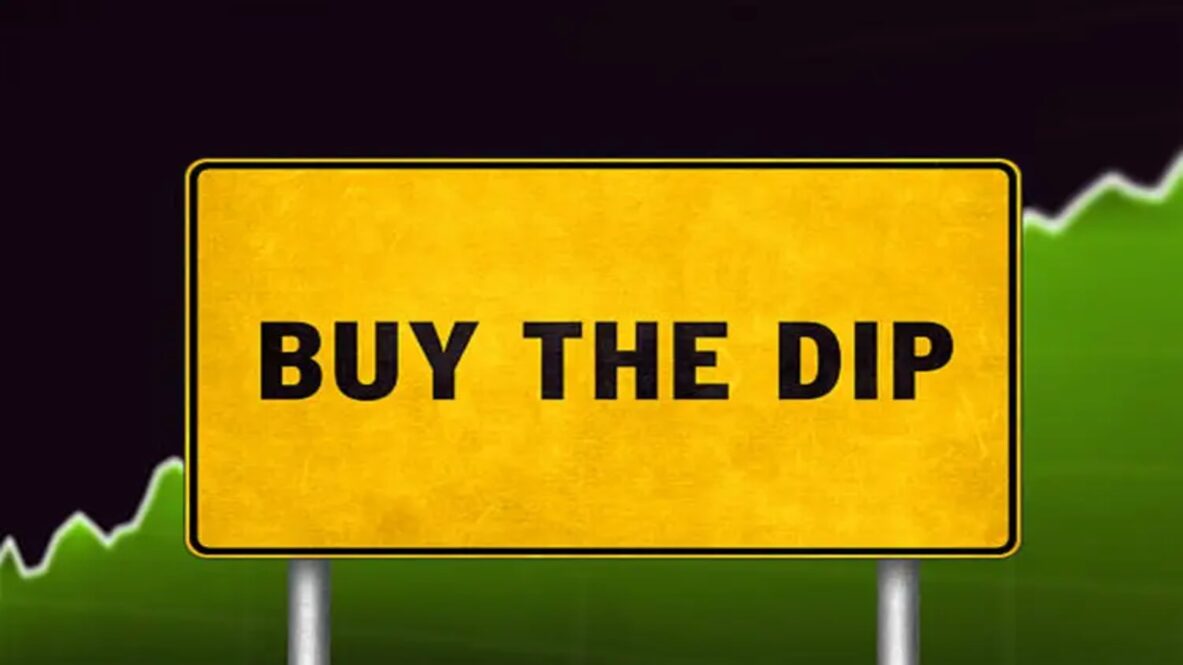- An analytical look at the BTFD strategy how it works, when it fails, and whether buying market dips is still effective in today’s volatile trading.
Table of Contents
- What BFTD Means for Modern Traders
- Historical Performance of Buying the Dip
- Why Market Conditions Have Changes in Recent Years
- The Role of Volatility and Liquidity in Dip Buying
- When Buying the Dip Can Backfire
- Smart Guidelines for Using the Strategy Safely
- Final Thoughts
- Why do traders panic-buy dips even when the trend is unclear?
- Can buying the dip work without using technical indicators?
- Do institutional investors use BTFD strategies the same way retail traders do?
The phrase Buy The Dip, better known today as BTFD, became a modern trading matra during the 2010-2021 bull market. Central bank liquidity was abundant, interest rates were near zero, and every correction looked like a temporary setback. Traders could buy almost any pullback and expect a rebound.
But markets have changed dramatically. Rising rates, persistent inflation, and sudden bursts of volatility have altered the risk-reward profile of dip buying. The question now is whether this once-reliable strategy still works.
What BFTD Means for Modern Traders
BTFD refers to buying an asset after a notable price drop with the expectation that it will recover. For over a decade, this strategy benefited from strong macros tailwinds. Quantitative easing boosted liquidity, corporate buybacks were consistent, and retail participation surged across equities and crypto. Bank of America’s 2021 Flow Show report described this period as “the strongest buy-the-dip ear in modern market history,” as major pullbacks were met with aggressive inflows.
The psychology behind the strategy is simple. Traders assume the dip is temporary rather than structural. But the assumption depends on the economic backdrop. When conditions shift, dip buying can become one of the most dangerous strategies on the market.
Historical Performance of Buying the Dip
Dip buying has a strong historical record in trending bull markets. When the S&P 500 experienced sharp pullbacks between 2012 and 2021, the average recovery time was relatively short. A small correction followed by a rebound became a recurring pattern.

Crypto markets showed similar behavior. Bitcoin’s 2017, 2020 and 2021 cycles demonstrated how buying deeply oversold levels during strong uptrends produced outsized returns. Traders who stepped in after the March 2020 crash saw rapid recoveries that reinforce the belief that “every dip is a gift.”
However, data from Morningstar’s 2024 investor behavior report highlights a different issue. Even in periods when buy-the-dip worked, many traders underperformed because they reacted emotionally during volatile periods. The report documented “return gaps” where actual investor results lagged the asset’s performance due to poorly timed entries and exits.
In other words, the strategy may work on paper, but those relying on instinct or social-media sentiment often miss the recovery or buy at the wrong depth.
Why Market Conditions Have Changes in Recent Years
The environment that supported near-automatic dip recoveries has shifted. The Federal Reserve began raising interest rates sharply after 2022, inflation stayed persistent, and liquidity conditions tightened. These changes altered the structure of market dips.
High interest rates make valuations more sensitive. Earnings disappointments are punished more severely. Dip recoveries take longer. Analysts at the Bank for International Settlements (BIS) have also noted that liquidity profiles in modern markets are thinner, which increases the frequency of “air pockets”, that is, sharp drops where price falls with limited buying support.
Instead of V-shaped rebounds, markets often experience W-shaped or prolonged sideways corrections. This creates a new challenge: identifying whether a decline is a short-term pullback or the early stage of a deeper trend reversal.
The Role of Volatility and Liquidity in Dip Buying
Dip buying relies on two key conditions:
- Volatility that is temporary.
- Liquidity strong enough to absorb selling pressure.
When volatility is driven by short-term fear due to policy comments, geopolitical shocks, and earnings noise, buying the dip can still work. But when volatility is rooted in structural issues, dip buying becomes a trap.
Liquidity matters just as much. During the 2020-2021, liquidity was extremely high, lowering the cost of dip entry.
Today, traders face choppier tape, wider spread and faster algorithmic reactions. False dips are common. A sudden 3 percent drop might look attractive, only to turn into a 12 percent decline over the next week.
When Buying the Dip Can Backfire
Dip buying becomes dangerous in three conditions:
- When the trend is no longer intact
A falling 200-day moving average is usually a sign that BTFD is no longer the dominant force. Bear market rallies often imitate true dips, causing traders to buy too early.
2. When macro uncertainty in rising
Periods with aggressive rate hikes, weakening earnings or slowing consumer demand tend to generate deeper, more persistent declines. Buying early becomes risky.
3. When valuations are stretched
In 2021, traders bought dips in high-multiple tech stocks assuming infinite growth. Many of those dips turned into multi-year drawdowns as valuations normalized.
Historical examples are clear. During the 2022 tech selloff, buying every dip resulted in repeated losses as rate expectations changed weekly. In crypto, 2021’s Dogecoin and 2022’s altcoin declines show how sentiment-driven rallies collapse quickly, turning every dip into a new low.
Smart Guidelines for Using the Strategy Safely
BTFD still works, but not blindly. Modern markets require structure, confirmation and discipline.
- Wait for technical confirmation
A recovery signal such as a higher low, bullish divergence, or a reclaim of the 20-day or 50-day EMA reduces the risk of catching a falling knife.
2. Use volume analysis
A true recovery shows rising buy volume on green candles, not low-effort rebounds.
3. Identify whether the dip is news-driven or trend-driven
Temporary fear dips often recover fast. Trend-driven dips require deeper caution.
4. Control position size
Dip entries should be smaller than breakout entries, not larger.
5. Define invalidation levels
- Buying the dip without a stop-loss turns a strategy into a gamble.
Final Thoughts
BTFD is no longer the simple, automatic winner it was in the liquidity-rich decade before 2022. It still has value, but only when paired with disciplined analysis. Traders who rely on social-media hype or emotional reactions are likely to underperform, while those who respect trend structure, volatility signals and macro conditions can still use dip buying as a powerful tool.
Also check out our article on Index Fund here.
Why do traders panic-buy dips even when the trend is unclear?
Many traders buy dips out of fear of missing out on a quick rebound.This reaction is often driven by the belief that assets “always recover,” even when market structure does not confirm a reversal.
Can buying the dip work without using technical indicators?
It can, but the risk is significantly higher. Traders who rely only on instinct or headlines tend to enter too early, since they lack confirmation tools that help separate temporary pullbacks from deeper selloffs.
Do institutional investors use BTFD strategies the same way retail traders do?
No. Institutions usually scale in gradually, use large datasets, and wait for signals tied to liquidity and macro conditions. Retail traders often enter in one aggressive order, which increases exposure if the dip extends.




 META
META  ^NDX
^NDX  BTC-USD
BTC-USD  XRP-USD
XRP-USD  SUZLON.NS
SUZLON.NS  CAD=X
CAD=X